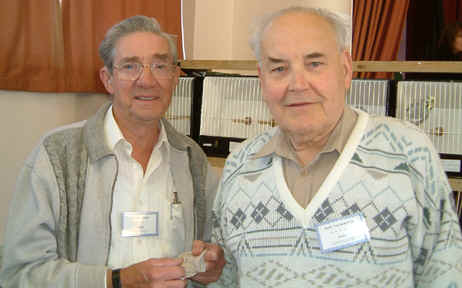
THE SPANGLES
SCRUTINEERED
by The Scrutineers
Steve Amos and Ron Thumwood
 |
THE SPANGLES
SCRUTINEERED |
We have often wanted to scrutinise the journey that the Spangle has made since it was first seen here in our own country, prior to that day it’s journey we can accept as having began in Australia, it’s arrival created enormous interest and just like previous new mutations it was a case of "everybody wants one" and so the demand soon outstripped the supply, we were fortunate through the generosity of Doug Saddler and his late partner Alf Ormerod who gifted us a young hen from their first years breeding, it was a Spangle Opaline Cobalt hen which bred well for us the following season.
We soon discovered that the first mate for our original Spangle was split for Cinnamon and so it followed that having used some good quality normals during the next few years our Spangles journey had travelled on, during the early days it came to be regarded as a dominant variety.
We very soon reached the stage when we had Spangles not only in quantity but Spangles combined with a number of other varieties as well, we thought the Spangle Opalines and Spangle Opaline Cinnamons to be particularly beautiful and so the journey went on and on, the Double Factors appeared and seemed to upset the "only ever pair Spangles to normals" enthusiasts but most fanciers made them welcome as they did not have to worry about markings or the lack of "bullseye" spots even though it took a considerable long time for separate classes to be allowed.
The Spangle has now travelled on right through to our most recessive varieties,
It can be seen in all our Dilutes, in Spangle Recessive Pieds, Spangle Crests, Spangle Greywings etc., and although it is not visible it is being masked by some Lutino’s and Albino’s, these last two can also mask the Clearbody and although we have not yet set eyes on a Spangle Clearbody we are reasonably sure it will not be long.
Regarding the Spangles and the early belief that it is a dominant variety we accept that it is what we would describe as a semi-dominant as having paired two spangles together on several occasions we have produced single factor, double factor and non-spangles in the same nest and are thankful to have experienced this wonderful mutation and we also look forward to the next one.